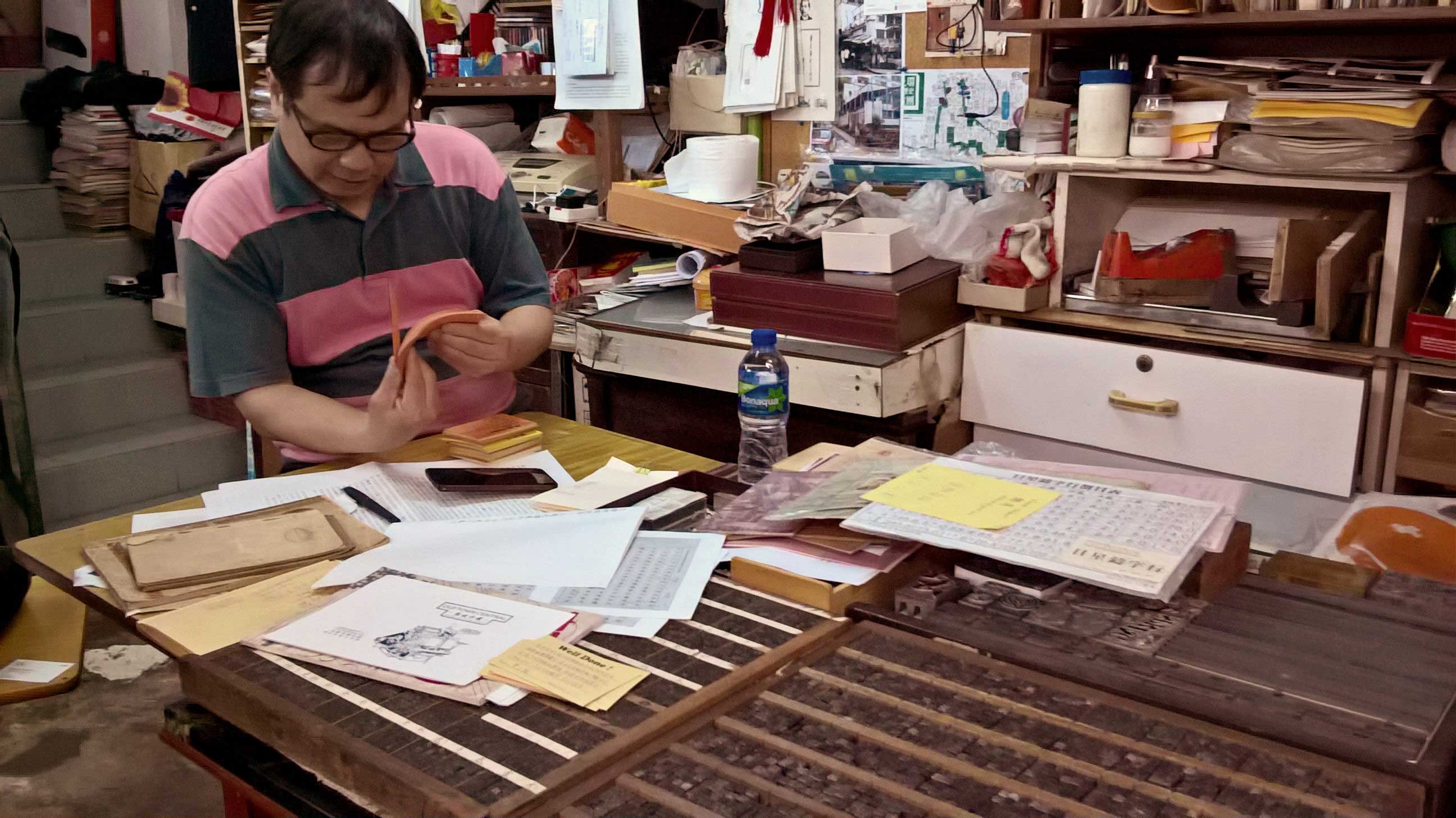Our research journey
The Wai-te-ata team visit Taiwan and Hong Kong in search of answers to our Chinese heritage type research questions
The transmission of types reflect the journeys of the people who use them. While the Chinese heritage types quietly await reactivation at Wai-te-ata Press today, it was once, many years ago, smelted and cast in the roaring din of Universal Type Foundry in Hong Kong, some 9,000 km away from Wellington. The more pieces of type we imaged under the microscope, the more we wanted to understand the journey of our types, and through this, the journeys of Chinese New Zealanders, its past and future users.

Answers to simple-seeming questions such as ‘when was Universal Type Foundry established?Who worked there? What was the history of the matrices, from which our heritage types were cast?’ were surprisingly hard to find. Much of the type, equipment, and documentation of the Hong Kong printing industry was lost in the race to modernise from letterpress printing to other technologies. As we searched through the digitised collections of Hong Kong libraries, it seemed our answers likely resided in unarchived personal collections or the memories of retired trade printers. Little did we anticipate that asking these questions would take us on our very own journey!
Our ‘eureka’ moment came in the form of a Facebook post. Taiwanese designer and self-taught type historian Chen Xiu-Mei (陳秀美), of the A Zhi-Bao (阿之寶) studio, published some findings from her In Search of Taiwan’s Disappearing Types【尋找台灣消失的字體】project, in which she writes ‘Zhong-Nan [type foundry] has full-form fangsong and condensed fangsong rarely seen in Taiwan, originally from Universal Type Foundry in Hong Kong’. A connection! In this post, we learnt Xiu-Mei and her team had been researching metal typefaces in Taiwan for the last decade. We emailed to introduce our Chinese heritage type restoration project, and to ask some our research questions about the provenance of our types.

The enthusiasm and generosity of her response was inspiring:
很高興收到你的來信,獲知你們的工作計畫,讓阿之寶團隊大為振奮,因為活版鉛字字體是很冷僻的研究題材,現今留存的文物資料非常少,目前華人圈應屬台灣的資料稍多一些,我也是耗時10年,才收集了目前的資料,我很樂意和你們分享這些成果,歡迎大家一起來切磋。
We're delighted to receive your email; learning of your restoration project has much heartened the A Zhi-Bao team. Because [hanzi] movable metal typefaces are such an obscure field of research, very little documentation and primary material survives. Within hanzi-circles, Taiwan has the slightly more generous depository of surviving documentation. However, it has still taken me ten years to gather what information I have so far, which I am very happy to share with you. I welcome us to exchange and share our knowledge.’
- Chen Xiu-Mei 陳秀美
Later, in December 2017, she writes ‘Have you ever visited a letterpress print shop or a foundry? We can help you organise a tour’.
And what a tour it was.
A flurry of emails and a few international flights later, our research team – Dr. Sydney Shep, Dr. Duncan Campbell, and Ya-Wen Ho – met the A Zhi-Bao research team in Taipei on Monday 26 February, 2018. Over the next seven working days, we kept 19 appointments across four cities in Taiwan (Taipei, Tainan, Kaohsiung) and China (Hong Kong). For the first two days, we were shadowed by Meru Media Studio’s documentary film crew: not only was it important that we were having conversations with Taiwan’s letterpress master printers, it was important for their stories to be captured before the stories are lost.

We met a great number of people, not only from within the printing industry but the broader cultural sector. We met retired master printers, new-generation designers, conservators, museum directors, gallerists, lecturers, and publishers. Sometimes, we talked with the help of translators, but always with great delight. We were delighted to be there, to soak up the sensory overload that is the Taipei or Hong Kong print shop, to observe localised tools and techniques, and to start to glimpse how print cultures in Taiwan and Hong Kong influenced and were influenced by contextualising social, political and cultural histories.
Much of the discourse was one of nostalgia, loss, and decline. Master printers shook their heads and lamented that few young people were interested in learning their craft. Yet, we witnessed teams of young people working with dedication and urgency to record, restore and revive a love of letterpress. As designer and founder of Taiwan’s inaugural letterpress festival Miki Wang points out, ‘even though everyone calls letterpress printing a sunset industry, the sunset itself is timeless; it will always be that moving, that beautiful.’
We came home knowing that the story of our Chinese heritage types are important not only to New Zealand histories, but also to Taiwan and Hong Kong histories. There are bigger stories to be told, and we hope the Chinese Scholars’ Studio will be a good place to tell those stories.
